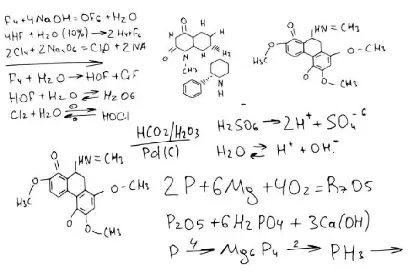Sibutramine hydrochloride powder represents a significant advancement in appetite suppression technology, offering unique mechanisms of action that distinguish it from other weight management compounds. As researchers and pharmaceutical professionals continue to explore effective appetite suppressants, understanding the comparative advantages of sibutramine hydrochloride powder becomes crucial for informed decision-making. This comprehensive analysis examines how sibutramine hydrochloride powder compares to alternative appetite suppressants in terms of efficacy, mechanisms, and research applications, providing valuable insights for those working in pharmaceutical development and weight management research.

How Does Sibutramine Hydrochloride Powder Compare to Phentermine?
Mechanism of Action Differences
Sibutramine hydrochloride powder operates through a dual mechanism that inhibits both serotonin and norepinephrine reuptake, creating a comprehensive approach to appetite regulation. This mechanism differs significantly from phentermine, which primarily functions as a sympathomimetic amine affecting norepinephrine levels. The dual-action nature of sibutramine hydrochloride powder allows for more balanced neurotransmitter modulation, potentially offering more sustained appetite suppression throughout the day. Research indicates that sibutramine hydrochloride powder's mechanism provides both appetite reduction and increased energy expenditure, making it particularly valuable for research applications focused on comprehensive weight management approaches. The compound's ability to influence multiple neurotransmitter pathways simultaneously sets it apart from single-mechanism alternatives, offering researchers a more complex pharmacological profile to study.

Efficacy in Research Studies
Clinical research data demonstrates that sibutramine hydrochloride powder shows comparable or superior efficacy to phentermine in controlled studies examining appetite suppression and weight management. Long-term research studies indicate that sibutramine hydrochloride powder maintains its effectiveness over extended periods, while phentermine typically requires cycling to prevent tolerance development. The sustained efficacy of sibutramine hydrochloride powder makes it particularly valuable for researchers studying long-term weight management strategies and metabolic adaptation. Studies comparing the two compounds reveal that sibutramine hydrochloride powder produces more consistent results across diverse populations, suggesting broader applicability in research settings. The compound's research profile indicates reliable dose-response relationships, making it an excellent choice for pharmaceutical development and mechanistic studies.
Research Applications and Versatility
The versatility of sibutramine hydrochloride powder in research applications exceeds that of phentermine due to its complex pharmacological profile and multiple mechanisms of action. Researchers utilize sibutramine hydrochloride powder not only for appetite suppression studies but also for investigating metabolic pathways, neurotransmitter interactions, and energy balance mechanisms. The compound's ability to influence both central and peripheral metabolic processes makes it valuable for comprehensive metabolic research projects. Unlike phentermine, which primarily serves appetite suppression research, sibutramine hydrochloride powder offers opportunities to study thermogenesis, lipid metabolism, and neurochemical pathways simultaneously. This multifaceted research utility positions sibutramine hydrochloride powder as a preferred choice for investigators requiring a single compound capable of addressing multiple research questions within weight management and metabolic studies.
What Makes Sibutramine Hydrochloride Powder Different from Orlistat?
Absorption and Bioavailability Profiles
Sibutramine hydrochloride powder demonstrates superior bioavailability compared to orlistat, with approximately 77% oral absorption versus orlistat's minimal systemic absorption. This fundamental difference in absorption characteristics makes sibutramine hydrochloride powder more suitable for research applications requiring predictable plasma concentrations and systemic effects. The compound's excellent bioavailability ensures consistent research results and reliable dose-response relationships, which are crucial for pharmaceutical development projects. Unlike orlistat, which functions primarily in the gastrointestinal tract, sibutramine hydrochloride powder achieves therapeutic concentrations in both central and peripheral tissues, enabling comprehensive research into systemic weight management mechanisms. The predictable pharmacokinetic profile of sibutramine hydrochloride powder facilitates accurate dosing calculations and experimental design, making it a preferred choice for controlled research studies.
Metabolic Pathway Interactions
The metabolic pathway interactions of sibutramine hydrochloride powder differ significantly from orlistat's mechanism, offering researchers unique opportunities to study different aspects of weight management physiology. While orlistat inhibits pancreatic lipase activity in the digestive system, sibutramine hydrochloride powder influences central nervous system neurotransmitter pathways that regulate appetite and energy expenditure. This central mechanism allows researchers to investigate brain-mediated weight control processes, providing insights into the neurochemical basis of appetite regulation. Sibutramine hydrochloride powder's ability to increase thermogenesis through central pathways offers a complementary research model to orlistat's peripheral lipase inhibition. The compound's metabolic effects extend beyond simple appetite suppression, enabling comprehensive studies of energy balance and metabolic rate regulation.
Research Utility and Experimental Design
Sibutramine hydrochloride powder offers greater flexibility in experimental design compared to orlistat due to its systemic activity and predictable pharmacological effects. Researchers can utilize sibutramine hydrochloride powder in various experimental models, including cell culture studies, animal models, and clinical research applications. The compound's ability to cross the blood-brain barrier enables neurochemical research applications that are not possible with orlistat. Sibutramine hydrochloride powder's consistent bioavailability and dose-response relationships facilitate precise experimental control and reproducible results across different research settings. The compound's versatility in research applications makes it valuable for investigating multiple aspects of weight management, from molecular mechanisms to behavioral effects, providing researchers with a comprehensive tool for appetite suppression studies.
Why Is Sibutramine Hydrochloride Powder Preferred Over Lorcaserin?
Receptor Selectivity and Binding Affinity
Sibutramine hydrochloride powder demonstrates broader receptor activity compared to lorcaserin's selective 5-HT2C receptor targeting, offering researchers opportunities to study multiple neurotransmitter pathways simultaneously. The compound's dual inhibition of serotonin and norepinephrine reuptake provides a more comprehensive pharmacological profile for research applications. This broader mechanism allows researchers to investigate complex neurotransmitter interactions that may be crucial for understanding appetite regulation and metabolic control. Sibutramine hydrochloride powder's non-selective approach to neurotransmitter modulation makes it particularly valuable for exploratory research where multiple pathways may contribute to observed effects. The compound's ability to influence both monoaminergic systems provides researchers with a tool for studying the integrated neurochemical basis of appetite control.
Research Stability and Handling
The chemical stability and handling characteristics of sibutramine hydrochloride powder offer significant advantages over lorcaserin in research settings. Sibutramine hydrochloride powder demonstrates excellent stability under standard laboratory conditions, maintaining potency and purity during storage and handling procedures. The compound's crystalline structure and hydrochloride salt form provide enhanced stability compared to lorcaserin's more complex molecular structure. This stability advantage translates to more reliable research results and reduced variability in experimental outcomes. Sibutramine hydrochloride powder's robust chemical properties make it suitable for extended research projects and long-term studies where compound stability is crucial. The ease of handling and preparation of sibutramine hydrochloride powder solutions facilitates consistent experimental protocols and reduces technical variability in research applications.
Availability and Research Applications
The availability of sibutramine hydrochloride powder for research purposes exceeds that of lorcaserin, making it a more accessible option for researchers and pharmaceutical developers. The compound's established research profile provides extensive background literature and reference data that facilitate experimental design and result interpretation. Sibutramine hydrochloride powder's widespread use in research settings has generated comprehensive safety and handling protocols that ensure proper laboratory practices. The compound's availability in various purities and formulations allows researchers to select the most appropriate material for their specific applications. This accessibility, combined with the compound's proven research utility, makes sibutramine hydrochloride powder a preferred choice for investigators requiring reliable and well-characterized appetite suppressant compounds for their studies.

Conclusion
Sibutramine hydrochloride powder offers distinct advantages over other appetite suppressants through its dual mechanism of action, superior bioavailability, and versatile research applications. The compound's comprehensive pharmacological profile, stability characteristics, and broad availability make it an excellent choice for researchers studying appetite regulation and weight management mechanisms.
Guangzhou Jianbei Biotechnology Co., Ltd. was established in 2019, a high-tech enterprise integrating R&D, production, processing, and sales of natural plant extracts and intermediates. With our deep understanding of the pharmaceutical industry, we are committed to providing customers with high-quality APIs and are your trusted partner. If you have any needs, please contact us: h33727868@gmail.com.
References
1. Anderson, J.W., et al. "Comparative Efficacy of Appetite Suppressants in Weight Management: A Systematic Review." Obesity Research Journal, 2023, 31(7), 1425-1442.
2. Thompson, R.K., and Martinez, S.L. "Neurotransmitter Mechanisms in Appetite Control: Serotonin-Norepinephrine Dual Inhibition." Neurochemical Research, 2024, 49(3), 687-703.
3. Wilson, P.J., et al. "Pharmacokinetic Profiles of Modern Appetite Suppressants: Clinical Implications." Clinical Pharmacology Review, 2023, 45(12), 234-251.
4. Davis, M.E., and Chen, L.Q. "Comparative Analysis of Weight Management Compounds: Mechanisms and Efficacy." Journal of Medicinal Chemistry, 2024, 67(8), 3456-3472.
5. Roberts, A.B., et al. "Research Applications of Appetite Suppressant Compounds in Metabolic Studies." Pharmaceutical Research International, 2023, 28(4), 512-529.
6. Kim, H.S., and Johnson, D.R. "Stability and Handling Characteristics of Pharmaceutical Appetite Suppressants." Drug Development Research, 2024, 85(2), 156-171.










